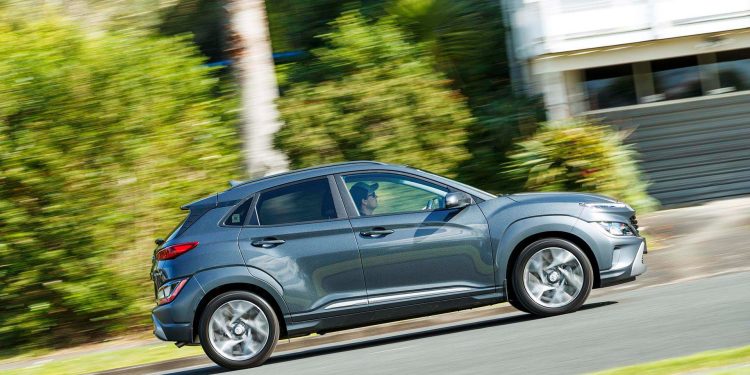2023 Hyundai Kona Hybrid Elite review
Words: Kyle Cassidy | Photos: Tom Gasnier
The word from dealer land is that more people are looking for vehicles that use less fuel. There’s a big group of buyers that aren’t quite ready to go full electric but don’t mind electrification if it saves on gas. EVs aren’t a fit for everyone and so a hybrid is a decent option if you are after something with lower emissions (and some of that rebate cash).
Hybrids, while they are not zero emissions, make fewer of them compared with their pure ICE counterparts. More brands are bringing new petrol/electric examples to the local market. Hyundai, for example, recently added a few extras to its line-up. Ioniq was its first but no one wanted a Prius clone hatchback; most want an SUV sort of thing. That’s where the Hyundai Kona hybrid steps up.
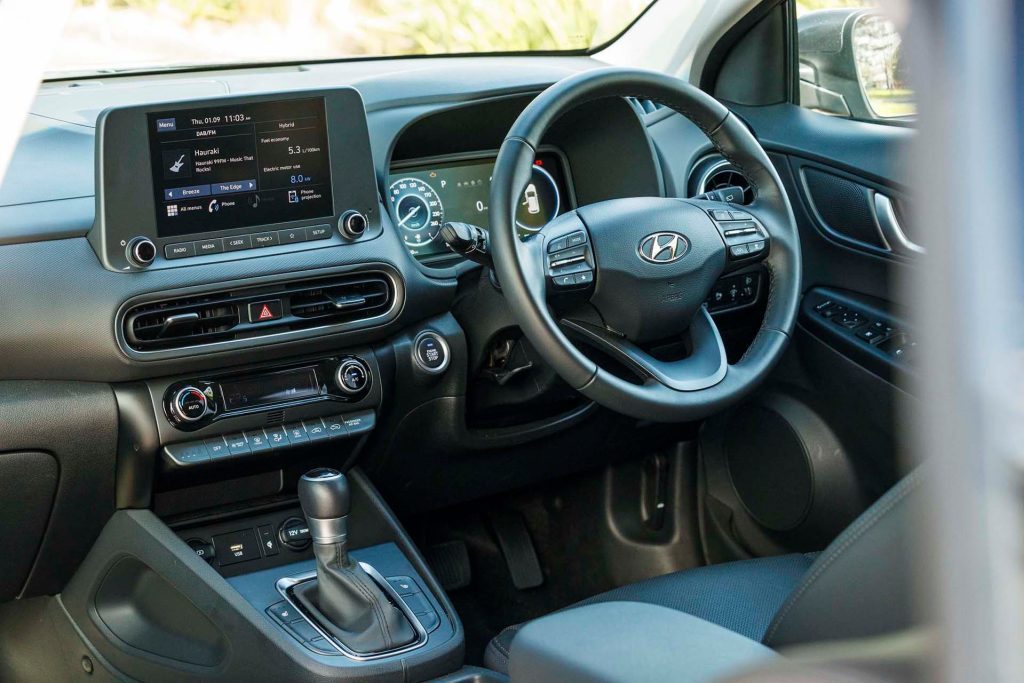
This is one of those ‘self-charging’ hybrids, in layman’s terms, or a full parallel hybrid for you geeks. Simply put, you fuel it with gas and never need to plug it in. There’s a lean burning 77kW/147Nm 1.6-litre four cylinder under the hood and that is boosted by a 32kW/170Nm motor which lives in the transmission casing with the six-speed twin-clutch.
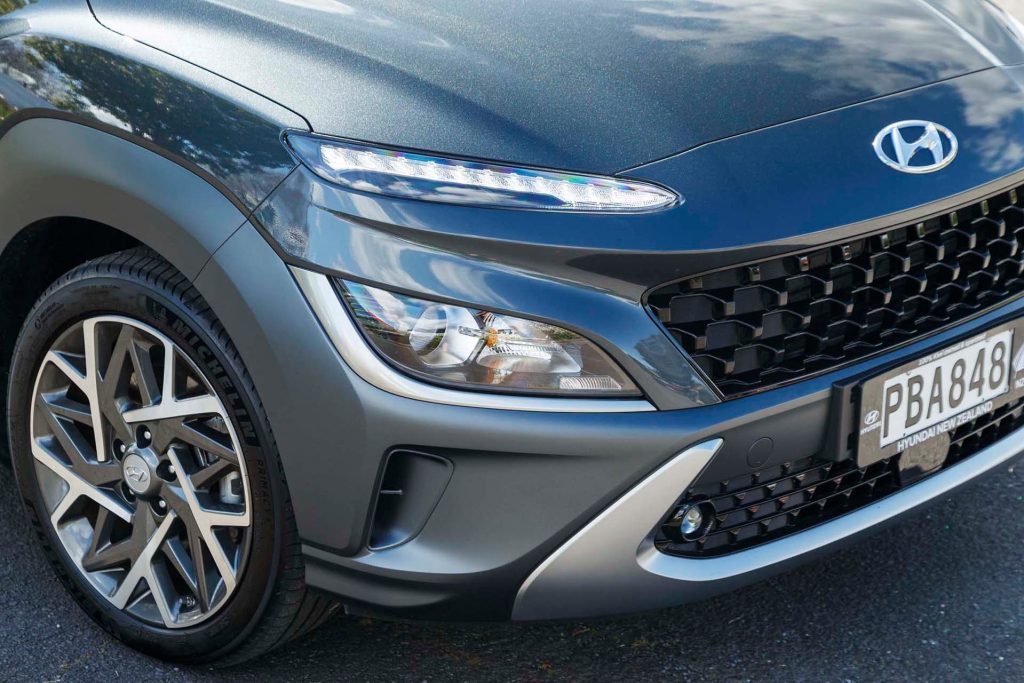
This motor/generator draws its energy from a 1.5kWh lithium-ion battery pack stored under the rear seat. When their powers combine, the hybrid has 104kW and 265Nm at its disposal.
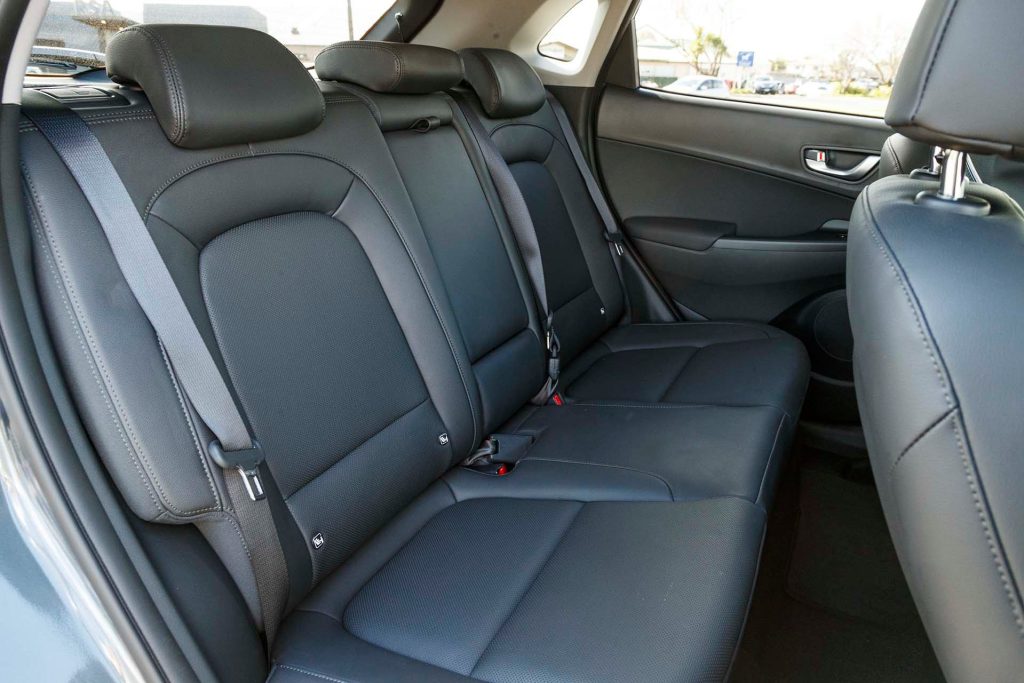
We generally like hybrids, not only for their frugal gas use but also for their smooth and torquey progress. However, while this Kona delivers on the torque front, the transmission isn’t as creamy as we’d like, the changes a little jerky. It’s like the electric torque is still flowing while the gearbox is trying to shift.
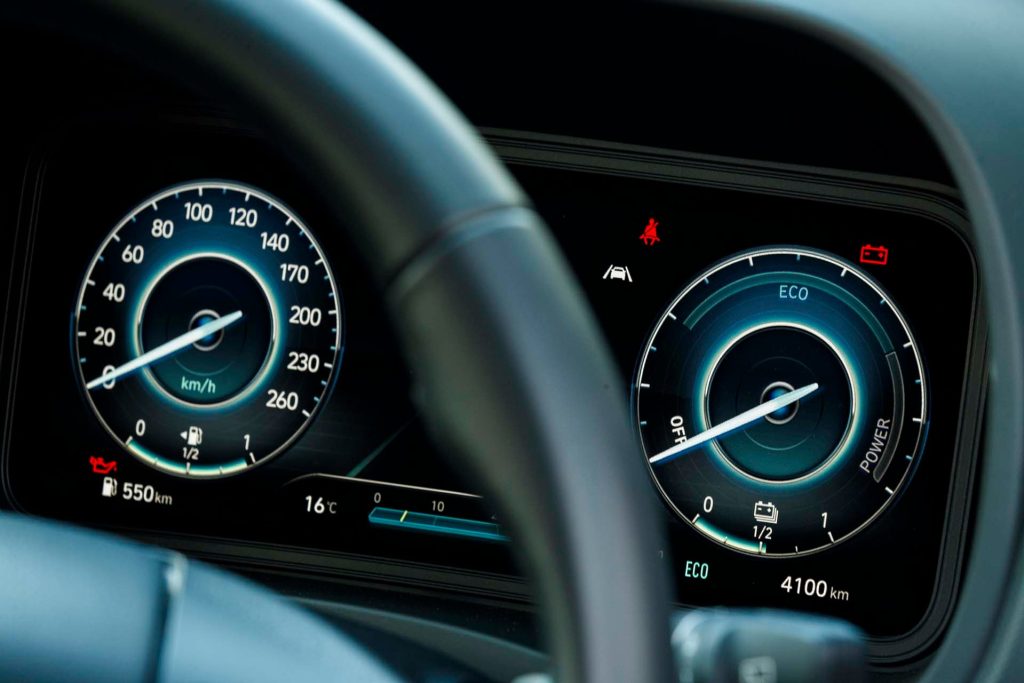
In city traffic, the hybrid switches seamlessly between engine (and motor) and electric-only modes, though the latter really only factors in slower running. The fuel use they state at 4.4L/100km, while our time with this tester came in at 5.0L/100km overall. There’s not much in the way of brake regen when you’re off the gas, and when you do get on the whoa pedal, the action is inconsistent, the brake force ramping up quickly as you step on it a little harder.
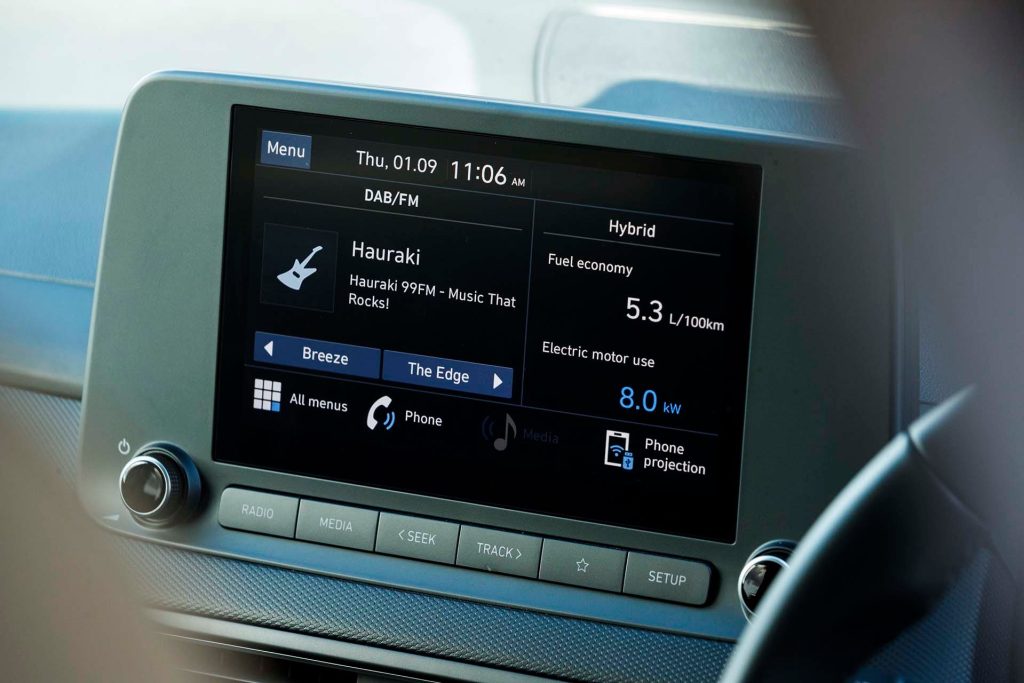
With an independent rear end, Kona rides well enough and the steering is sorted too. It’s a faithful handler with nothing untoward about the way it goes. There are two drive modes as such, Eco being the default, and when you whack the gear lever over into what would be the manual sequential gate, you get a Sport mode. This turns the power gauge on the digital instrument panel into a tacho, so you can see how much harder the engine is working. We’re not sure how many Kona hybrid buyers will dial this up but it might be useful on a hill road, to help keep it in a lower gear longer.
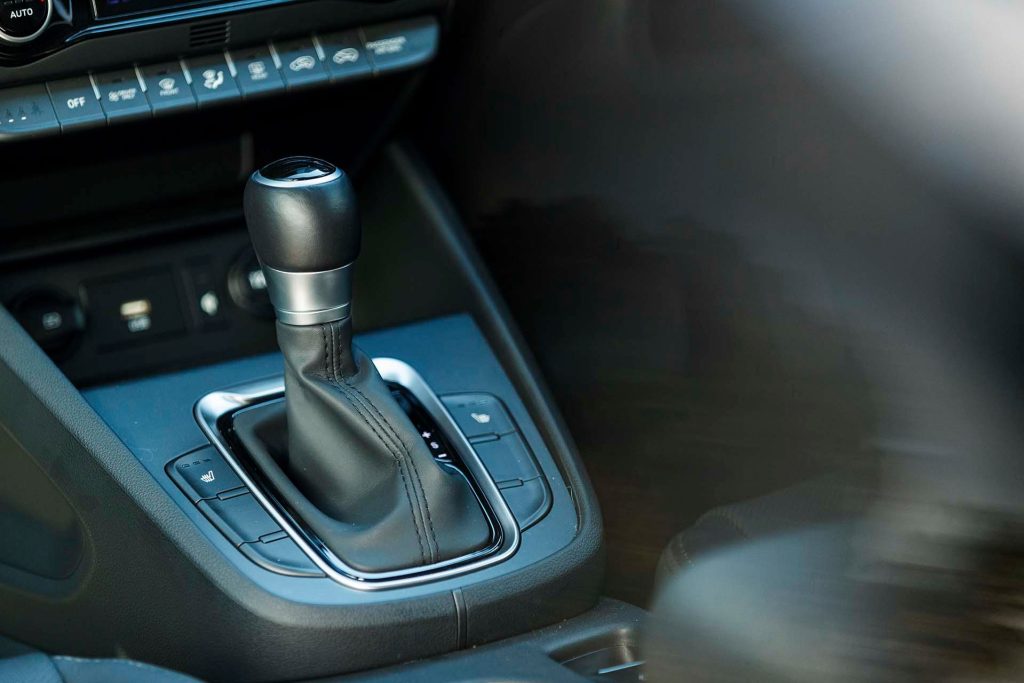
In Eco, the power delivery is either on or off, with the corresponding delay in throttle response, and the Sport setting helps alleviate this, a little.
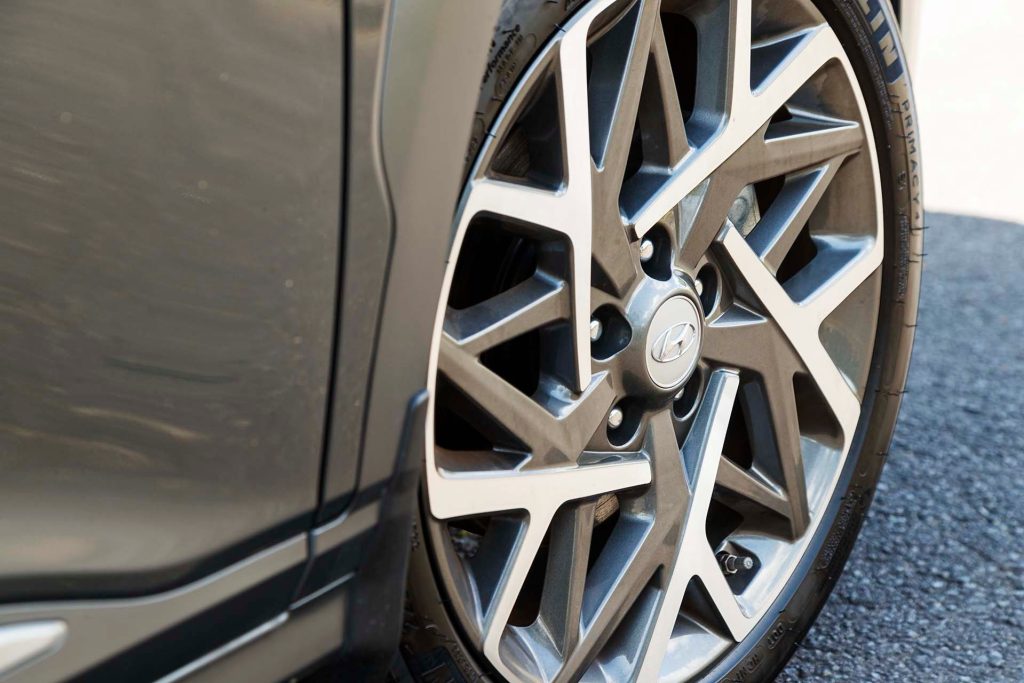
No one need know you are driving a hybrid as this electrified Hyundai Kona looks much like the regular version, the styling funky in a non-conformist way. This is what they call a compact SUV, a fitting description here as abundant the cabin accommodation isn’t. The boot dimensions are also tight with a high-set floor while there’s only a tyre repair kit in the wheel well beneath. The rear seats provide enough space for buyers of compact SUVs, those who only ever occasionally carry passengers in the back. This little tyke is good for up to 1300kg of tow, however, believe it or not.
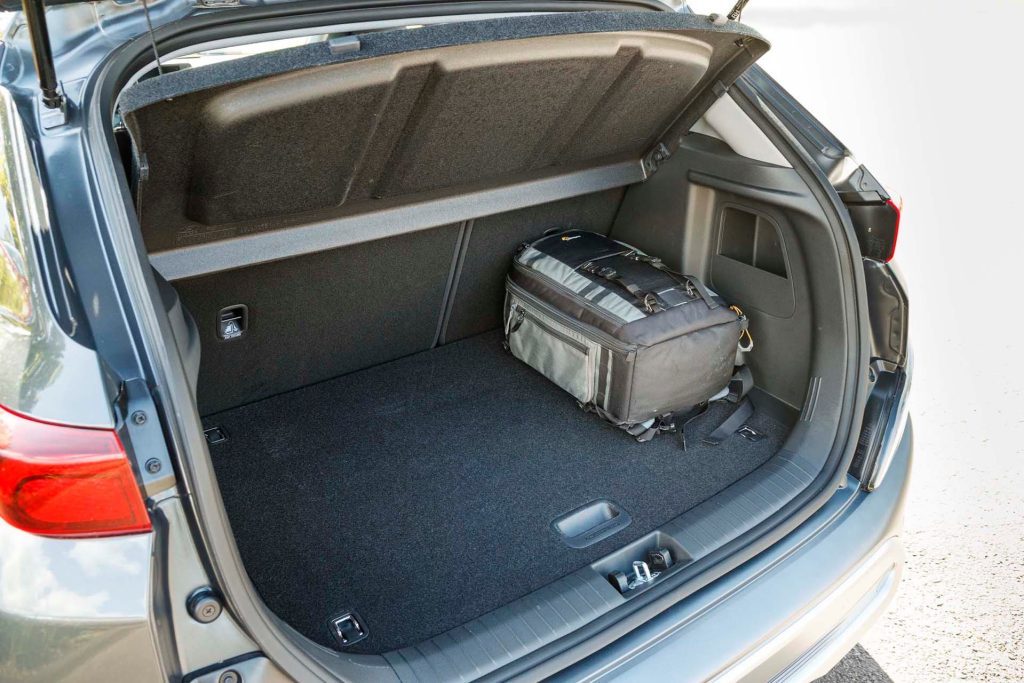
This being an Elite there are leather seats (we think it’s leather), heated too with electric adjustment but there’s just single-zone air con, and too much hard black plastic about. It has most of the usual safety features including auto braking, lane keeping and blind spot minding. This was enough safety kit to gain a five-star ANCAP rating back in 2017 when Kona was fresh. It’s said to have the best in-class tech features and while you get a charge pad, you have to hook your phone up to gain sat nav, for instance. While there are rear parking sensors, there is no around view for the camera and the imaging isn’t sharp either.
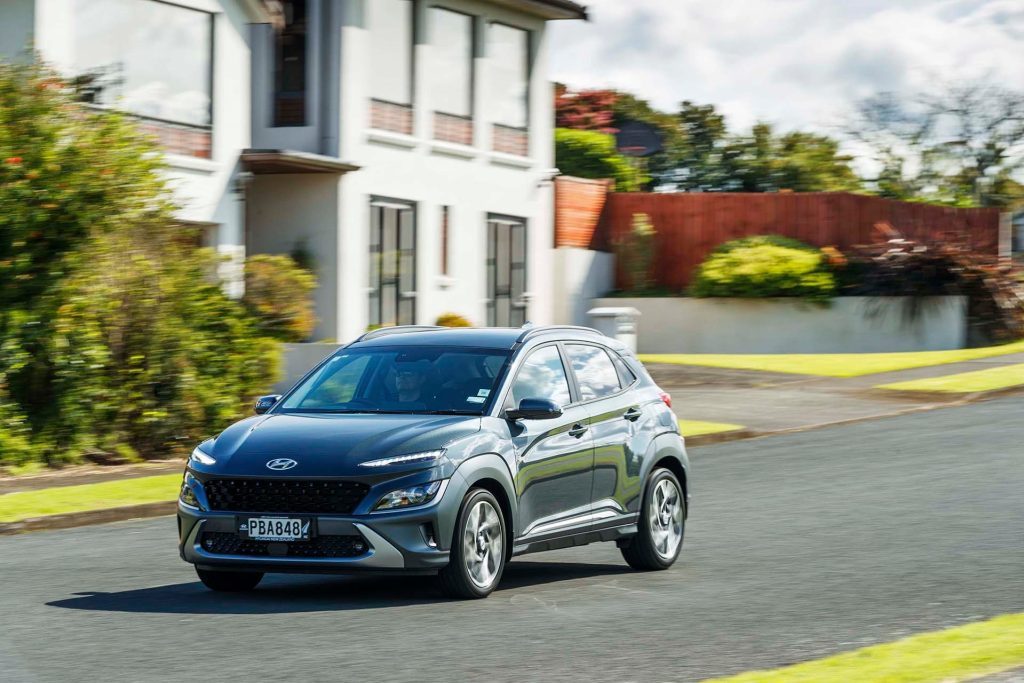
Unfortunately for the Kona hybrid, there is a considerable premium to consider. This hybrid Elite is a lofty $54,990 and while it has a rebate of $3418 thanks to emissions of 101g/km, a conventional 2.0 Elite is $39,990 (165g/km and fee neutral). And so the hybrid is more of a fit for a corporate buyer with a requirement to lower CO2. The private buyer is better off with the 2.0 Kona and they can do some tree planting to offset the carbon. Or not.
| Model | Hyundai Kona Hybrid Elite |
| Price | $54,990 |
| Clean Car Discount | Rebate – $3418 |
| Engine | 1580cc, IL4, hybrid motor |
| Total System Output | 104kW/265Nm |
| Drivetrain | 6-speed twin-clutch, FWD |
| Fuel Use | 4,4L/100km |
| C02 Output | 101g/km |
| 0-100km/h | 8.9sec |
| Weight | 1453kg (claimed) |


